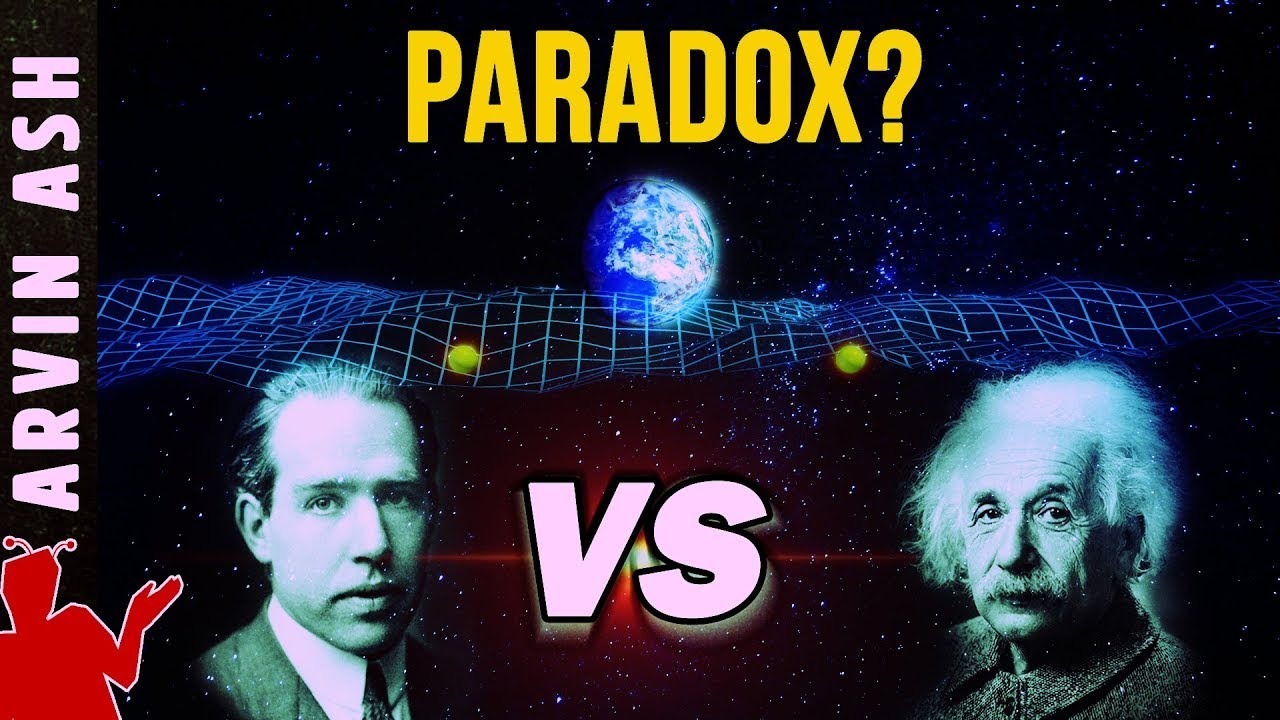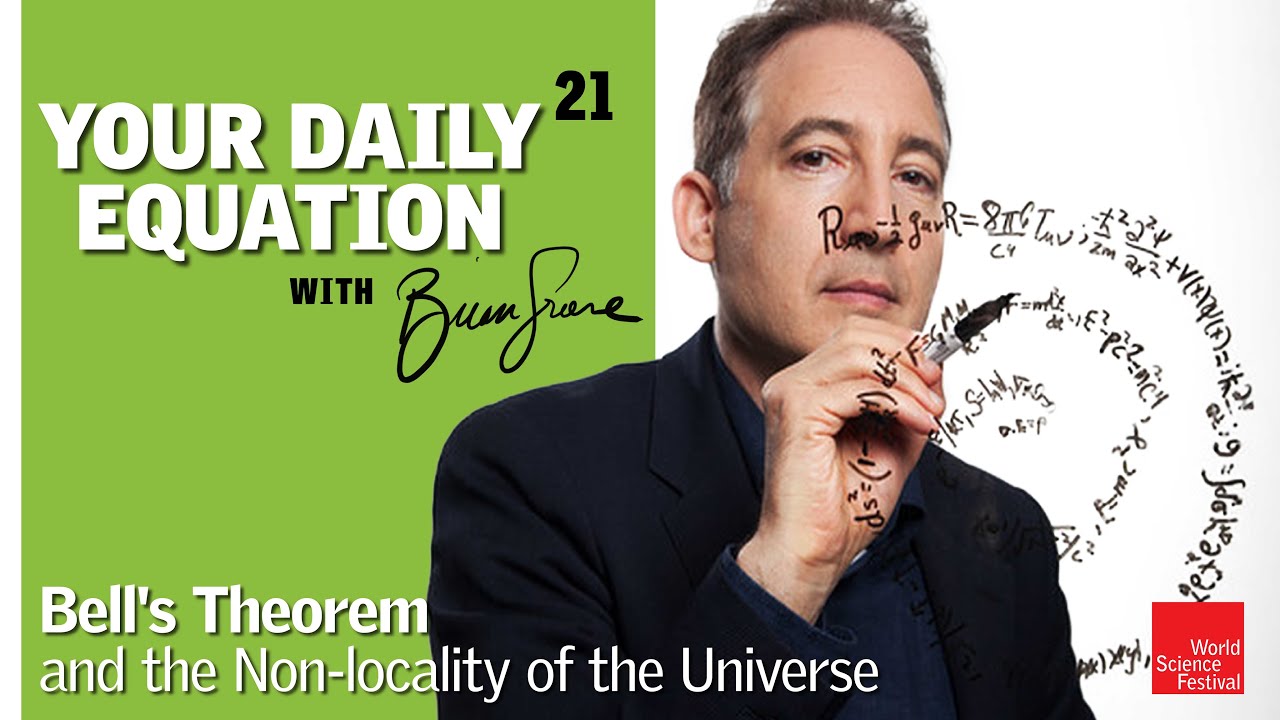Why is quantum mechanics non-local? (I wish someone had told me this 20 years ago.)
TLDRThis video script delves into the concept of locality and its defiance in quantum mechanics, particularly through entanglement. It clarifies misconceptions about 'spooky action at a distance' and explores the implications of the Nobel Prize-winning experiments that challenge local hidden variables theories. The script explains quantum non-locality, the difference between knowledge correlation and physical action, and critiques the misunderstandings around entanglement's role in faster-than-light communication. It also touches on the philosophical debates between Einstein and Bohr, and the significance of Bell's theorem in understanding the fundamental nature of reality.
Takeaways
- 🌌 The 2022 Nobel Prize in Physics was awarded for research showing the universe is not locally real, highlighting quantum mechanics' non-locality.
- 🌐 Locality means interactions and actions can only occur between objects in close proximity, and non-locality would imply instantaneous effects over distance.
- ✈️ Non-locality is not the same as faster-than-light travel, though they are related in that both are not allowed in Einstein's theory of space and time.
- 🔍 Einstein's theory of relativity suggests that nothing can exceed the speed of light, and events can only influence what lies within their future light cone.
- 📦 The concept of non-locality in quantum mechanics is often misunderstood, with entanglement being a correlation over distance rather than an action at a distance.
- 🤔 Quantum mechanics is described by wave-functions, which predict probabilities of measurement outcomes but not with certainty, making it inherently non-deterministic.
- 🌀 Entanglement in quantum mechanics involves particles that are correlated in a way that the state of one instantly affects the state of another, regardless of distance.
- 🚫 Quantum mechanics does not allow for information to be transmitted faster than light, adhering to the no-signalling theorem.
- 🔄 John Bell's theorem and subsequent experiments have shown that quantum mechanics violates Bell's inequality, suggesting non-locality in the correlations of measurement outcomes.
- 🎓 Understanding quantum mechanics involves grasping concepts like wave-functions, probabilities, interference, and the implications of non-locality on our understanding of reality.
Q & A
What was the Nobel Prize in Physics awarded for last year according to the headlines mentioned in the script?
-The Nobel Prize in Physics was awarded for demonstrating that the universe is not locally real, showing 'spooky quantum behavior' and 'spooky action at a distance', which relates to the concept of quantum entanglement and non-locality.
What does the term 'locality' mean in the context of the script?
-In the script, 'locality' refers to the principle that physical interactions and influences can only occur between objects that are in close proximity to each other, and not instantaneously across vast distances.
How does the script differentiate between non-locality and faster-than-light travel?
-The script explains that non-locality is the concept of instantaneous appearance or interaction across distances without the need for physical traversal, while faster-than-light travel specifically refers to moving from one point to another at speeds exceeding that of light. They are related but distinct concepts.
What is the 'future light cone' in the context of Einstein's theory of space and time?
-The 'future light cone' is a concept in Einstein's theory of space and time that represents the region of space-time that can be influenced by an event. It is bounded by 45-degree lines emerging from the event, indicating that nothing can travel faster than the speed of light to influence outside this region.
How does the script illustrate the concept of non-local correlation using the example of two numbers in envelopes?
-The script uses the example of two numbers, one in each envelope sent to different locations, to illustrate non-local correlation. When one number is revealed, the other number becomes known instantaneously, showing a correlation that spans distance, even though the physical action of revealing the number is local.
What is the difference between physical non-locality and non-local correlation as described in the script?
-Physical non-locality refers to an action that occurs at a distance, like something going through a portal. Non-local correlation, on the other hand, is about gaining knowledge about something that happened elsewhere instantaneously, but the physical changes associated with gaining that knowledge are local.
What is the significance of the wave-function in quantum mechanics as mentioned in the script?
-In quantum mechanics, the wave-function is used to calculate the probability of obtaining a particular measurement outcome. It does not predict outcomes with certainty, which is why quantum mechanics is considered non-deterministic.
How does the script explain the concept of quantum entanglement?
-The script explains quantum entanglement through the example of a particle decaying into two particles with correlated spins. The entangled particles have a total spin that is conserved, and knowing the spin of one particle instantaneously informs you about the spin of the other, regardless of the distance between them.
What is the 'no-signalling theorem' in quantum mechanics?
-The 'no-signalling theorem' in quantum mechanics states that it is impossible to use quantum entanglement to send information faster than the speed of light. This is because the measurement outcomes on entangled particles are randomly distributed according to the wavefunction probabilities.
What is Bell's theorem and what does it imply about local hidden variables models?
-Bell's theorem states that any local hidden variables model that reproduces the predictions of quantum mechanics must violate measurement independence. It implies that if you want a local model that accurately reflects quantum mechanics, it cannot be locally causal.
How does the script address the idea of 'spooky action at a distance'?
-The script discusses 'spooky action at a distance' as a term originally used by Einstein to criticize the idea of non-local physical processes in quantum mechanics. It explains that while quantum mechanics exhibits non-locality in the form of wave-function collapse, it has not been conclusively shown that this non-locality represents a physical 'action at a distance'.
Outlines
🌌 The Concept of Locality and Quantum Mechanics
The paragraph introduces the concept of locality in the context of the universe's behavior, contrasting it with the non-local 'spooky' quantum phenomena. It sets the stage for a discussion on whether the universe is locally real or subject to quantum mechanics' non-local effects. The speaker outlines a plan to explore the meaning of locality, its implications in everyday life, and how it conflicts with quantum theory. The explanation includes the idea of traveling to New York City as an analogy for locality and the concept of 'non-locality' as an instantaneous action across distances, which is not allowed by Einstein's theory of space and time. The paragraph concludes with an introduction to the space-time diagram and the concept of light cones, which are boundaries within which the effects of an event are confined.
🔬 Quantum Mechanics and Non-local Correlations
This section delves into the principles of quantum mechanics, focusing on the wave-function and its role in calculating probabilities of measurement outcomes. It explains the non-deterministic nature of quantum mechanics and uses the example of a photon passing through a semi-transparent plate to illustrate how the wave-function evolves upon measurement. The paragraph introduces the concept of entanglement, where particles can have correlated properties across distances, and how this correlation is updated instantaneously upon measurement of one particle, regardless of distance. The discussion also touches on Einstein's 'spooky action at a distance' and the debate between Einstein and Bohr on the reality of the wave-function and the existence of hidden variables.
🔗 Entanglement and the Misunderstanding of Non-locality
The paragraph clarifies misconceptions about entanglement, emphasizing that it does not imply instantaneous 'action' or change in entangled particles when one is manipulated. It explains that entanglement is merely a correlation that extends over distance and that no information can be transmitted faster than light using this phenomenon, adhering to the no-signalling theorem. The speaker also introduces John Bell's work on non-locality, differentiating between physical non-locality and non-local correlations, and setting the stage for Bell's theorem and its implications for local hidden variable theories.
📡 Bell's Theorem and the Challenge of Local Hidden Variables
This section discusses Bell's theorem and its implications for local hidden variable theories. It explains the concept of local causality and how quantum mechanics violates this principle, indicating non-locality in the wave-function collapse. The paragraph uses the Mach-Zehnder interferometer to illustrate the challenges of creating a local hidden variable model that can reproduce quantum mechanical phenomena without violating measurement independence. It suggests that to achieve local causality, such a model would need to incorporate a form of 'superdeterminism,' which is a controversial concept in the interpretation of quantum mechanics.
🏆 Nobel Prize for Quantum Mechanics and the Reality of Non-locality
The final paragraph summarizes the discussion by highlighting the Nobel Prize awarded for experimental confirmation of quantum mechanics' violation of Bell's inequality, which challenges local hidden variable theories. It points out that while quantum mechanics is non-local due to wave-function collapse, it has not been conclusively proven that this non-locality is a physical reality. The speaker also addresses the philosophical implications of the many-worlds interpretation and invites viewers to explore these topics further through a linked course on quantum mechanics, offering a comprehensive understanding of the subject.
Mindmap
Keywords
💡Locality
💡Non-locality
💡Quantum Mechanics
💡Wave-function
💡Entanglement
💡Spooky Action at a Distance
💡Hidden Variables
💡No-Signalling Theorem
💡Bell's Theorem
💡Measurement Independence
💡Superdeterminism
Highlights
The Nobel Prize in physics was awarded for demonstrating the universe's non-locality, challenging the concept of locality in physics.
Locality traditionally means that interactions and actions occur only between immediate neighbors in space and time.
Non-locality suggests the possibility of instantaneous effects over distance, akin to a portal for matter or information.
Einstein's theory of space and time does not allow for non-locality or faster-than-light travel.
The concept of 'spooky action at a distance' was Einstein's critique of quantum mechanics' non-local implications.
Quantum mechanics describes probabilities of outcomes rather than deterministic certainties, challenging classical physics.
The wave-function 'collapse' is an instantaneous update of quantum states, suggesting non-locality in quantum mechanics.
Entanglement in quantum mechanics creates non-local correlations between particles, regardless of distance.
Bell's theorem explores the concept of local causality and its violation in quantum mechanics, indicating non-locality.
Experiments have shown violations of Bell's inequalities, supporting the non-local nature of quantum mechanics.
Hidden variables theories propose that underlying, yet unknown, variables determine quantum outcomes, potentially restoring locality.
Measurement independence is a key assumption in hidden variables theories, the violation of which could explain quantum non-locality.
The concept of 'superdeterminism' emerges as a local hidden variables model that violates measurement independence.
Quantum mechanics does not allow for faster-than-light communication or signaling, as dictated by the no-signalling theorem.
The video discusses the philosophical implications of quantum mechanics, including debates on free will and determinism.
The presenter offers a course on quantum mechanics for deeper understanding, suggesting the complexity and depth of the subject.
Transcripts
Browse More Related Video

Best lecture so far on what Entanglement is in Quantum Physics

The EPR Paradox & Bell's inequality explained simply

Quantum Entanglement & Spooky Action at a Distance

Quantum Entanglement: Spooky Action at a Distance

Your Daily Equation #21: Bell's Theorem and the Non-locality of the Universe

Spooky Action at a Distance (Bell's Inequality) - Sixty Symbols
5.0 / 5 (0 votes)
Thanks for rating: